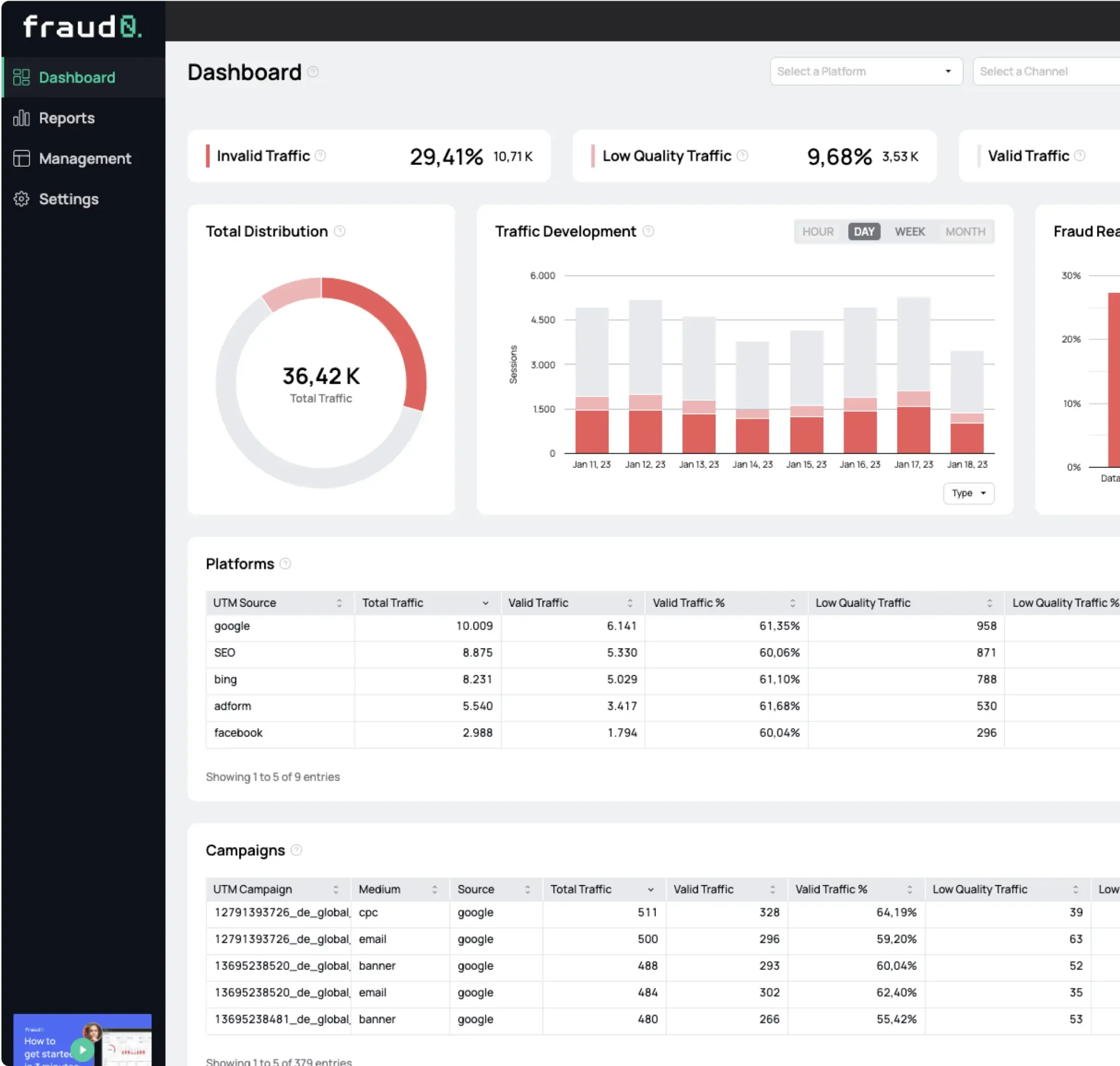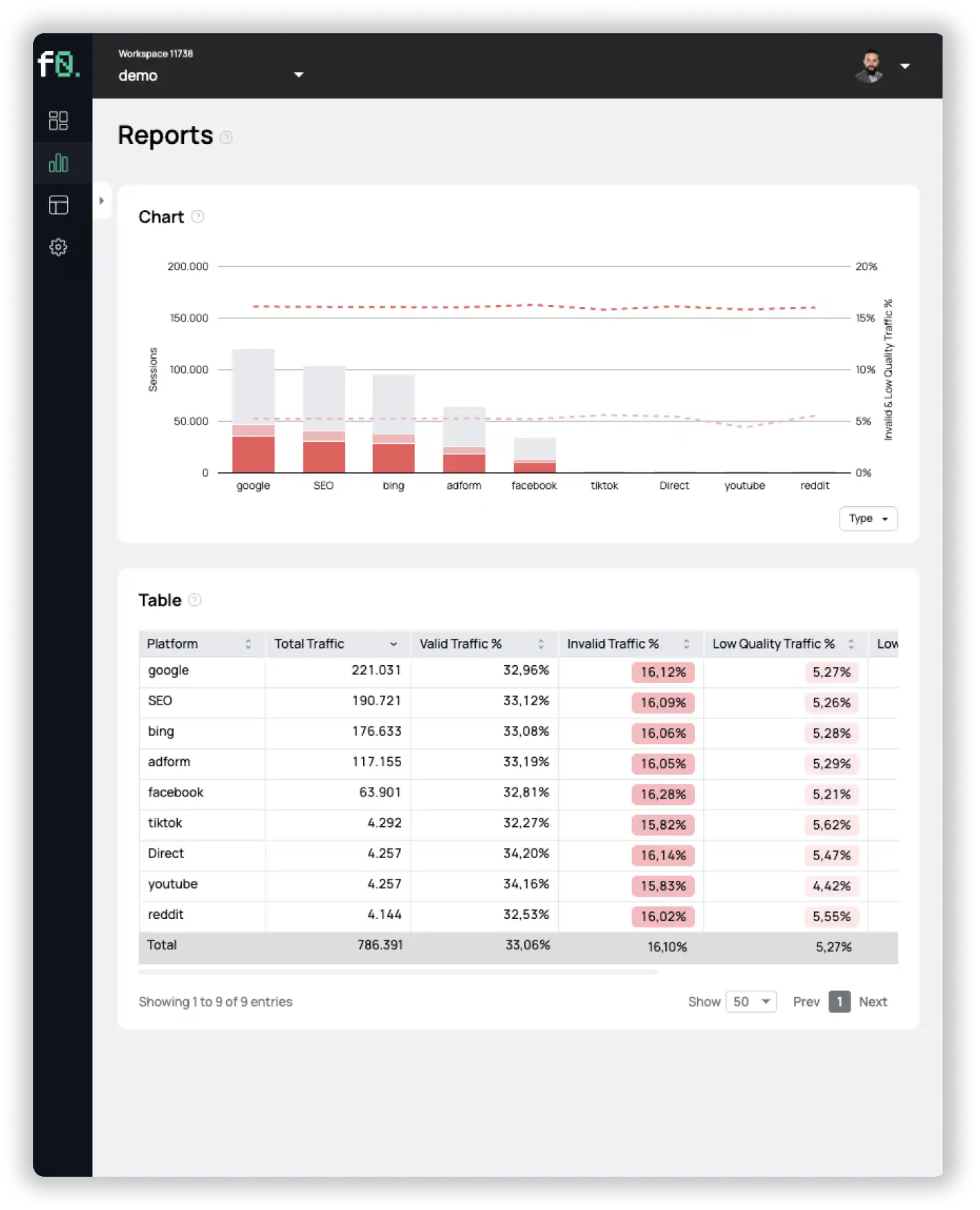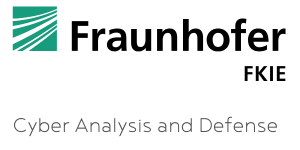- Products
- Integrations
- Plans
- Success Stories
- Resources
- Latest WhitepaperUnmasking the Shadows: Invalid Traffic 2024
Learn everything you need to know about Invalid Traffic in 2024 based on our customers’ data. Including a breakdown into marketing channels, industries and much more.
Resources
- Company
- Company
- Blog
Ad fraud cases of the past years

Oliver Kampmeier
Cybersecurity Content Specialist

The question we are most often asked is, “How big is ad fraud, really?”
While it’s hard to give exact numbers, estimates suggest that advertisers will lose over $100 billion to fraudsters in 2023.
In this article, we’ve compiled over 60 cases of ad and click fraud. This will give you an idea of the scale of what is arguably the biggest fraud of the modern era.
Finally, we would like to point out: All the cases listed here have been uncovered. In reality, there are many, many more cases and scams that continue to operate in secrecy, or where the fraudsters have gotten away with it.
2021
LeoTerra - 20.5 million unique CTV devices spoofed per day
CelloTerra - 2.4 million unique CTV devices spoofed per day
RapidFire - $20 million per month with spoofed CTVs
GriftHorse - Android malware steals millions after infecting 10 million phones via Google’s Play Store
SmokeScreen - $6 million per month with fake ad impressions with a turned-off screen
Octobot - Over $5 million a month with spoofed apps
Pareto - 650 million ad requests per day with Android devices pretending to be connected TVs
eGobbler & Nephos7 - Up to 6% of all display advertising on the internet was fake
ScamClub - Gift card scams by exploiting Safari browser security bugs
ParrotTerra - $30 to $50 million damages in ad spend
Grinch - 25 million ad impressions for malicious gift card and lottery scam pages
2020
StreamScam - $14.5 million damages due to spoofed apps and devices
Adrozek - Malware infecting browsers on Windows
Weasel - Fake privacy-focused messenger in Microsoft’s Windows store
MultiTerra - $1 million per month with spoofed connected TVs
Terracotta - 2 billion fake ad impressions from malicious Google Play Store apps
Chartreuseblur - Over 3.5 million fraudulent photo app installs via Google Play Store
AndroidOS_HiddenAd.HRXJA - Fake ad views in barcode scanner apps from Google Play Store
Beauty and the Beast - Over 20 million fraudulent app installs via Google Play Store
Facebook sues LeadCloak for helping scammers run deceptive ads on its platform
IceBucket - Connected TV fraud generates 1.9 billion ad requests per day
Tekya - Malware in game apps for children with over 1 million downloads from Google Play Store
Monarch - Exploited passive Roku apps display ads
404bot - $15 million with spoofed domains
The 404bot scheme was active between 2018 and throughout 2020, generating more than $15 million in ad spend from 1.5 billion video ads. The fraud was done by “domain spoofing” – impersonating a publisher’s web page – and leveraging the fact, that buyers don’t always check the ads.txt file with bots that generate fake browser data and create fabricated URLs in order to pilfer media spend.
Cheetah Mobile & Kika Tech - Google removes 600 Android apps for click injection and disruptive mobile advertising
Haken & Joker - Malicious apps mimics user clicks and signs victims up for expensive premium services
DiCaprio - Spoofing banner ads on Grindr for Roku video ads
2019
$100,000 a month with fake news websites
iHandy - 49 apps removed from Google Play Store due to their violation of its policies for deceptive or disruptive ads
AdBlock and uBlock - Cookie stuffing from malicious adblockers
LionMobi and Jedimobi - Facebook sues app developers for click fraud
CooTek - 440 million downloads from Google Play Store with malicious adware plugin
VidMate - 500 million installations with hidden ads, fake clicks and purchases
DO Global - Google Play Store apps with over 90 million downloads committing various types of ad fraud
Six apps from Chinese app developer DO Global with more than 90 million installations from Google’s Play Store were committing various types of ad fraud, including fake clicks and attribution fraud.
Hidden video ads in banner ad slots
Twitter’s MoPub ad platform had been hijacked in an ad fraud scheme where fraudsters bought cheap banner ad slots in various apps and resold the ad spaces for more expensive autoplaying video ads. The video ads were of course never shown to the users and one banner ad slot was stuffed with multiple video ads, draining the user’s battery and mobile data.
2018
3ve - Generating $30 million from fake clicks on fake websites
The 3ve operation was one of the largest ad fraud schemes ever seen. The botnet infected at least 1.7 million computers, counterfeited over 10,000 websites and generated between 3 and 12 billion ad requests per day. The sophisticated system exploited various techniques such as infecting victim’s computers, remote controlling hidden browsers and stealing corporate IP addresses. With the hidden browsers, 3ve was able to generate fake clicks on ads on its fake websites, taking in ad revenue from about 60,000 digital advertising accounts. The scale of the operation was enormous and even led to an FBI investigation.
We Purchase Apps - 127 apps, millions of downloads
The company “We Purchase Apps” specialized in acquiring semi-popular Android apps used by actual human users. After the purchase, the fraudsters then studied the behavior of the apps’ users and created bots to mimic the action patterns. These bots are then used to generate fake traffic within the specific apps, which in return earns additional ad revenue. The company was quite successful with its acquisitions – including the popular EverythingMe app – totaling in to over 115 million app downloads.
Zacinlo - Fake VPN turns out to be rootkit-based malware
The Zacinlo adware ran covertly since early 2012 and infected mostly Windows 10 devices. As a rootkit-based spyware, it protected itself as well as its other components very well also from antivirus software. The malware among other things did fraudulent browser redirects, created fake clicks on online ads in hidden windows and also changed ads loaded naturally inside the victim’s browser with the attacker’s ads, so they could collect the ad revenue. Zacinlo was downloaded disguised as a fake VPN named “s5mark”.
Facebook purges 1.3 billion fake accounts
Facebook’s efforts to clean its fake accounts led to the purge of more than 1.3 billion fake accounts that were created with the intent of spreading spam or conducting illicit activities such as scams. Of the remaining accounts, between 3 and 4 percent (66 – 88 million) are likely fakes.
Fake ad blockers with over 20 million downloads in Chrome’s Web Store
Five fake adblocker browser extensions were downloaded over 20 million times via Google’s Chrome Web Store. The extensions sent back information about the victim’s browser behavior to the attacker’s server. The extensions itself contained only harmless malicious code, but through the connection to the attacker’s command & control remote server this could have changed at any time and could have been used for fraudulent techniques such as cookie stuffing.
Twitter purges fake accounts with over 3 million followers
In an effort to clean its user base and reduce automated tweets and retweets, Twitter purged several accounts with a total of over 3 million followers from its platform for violating Twitter’s spam policy. The accounts were notorious for mass-retweeting each other’s posts and artificially creating viral tweets.
RottenSys - Infecting 5 million Android devices and generating fake ad traffic
With its 316 variants, RottenSys infected over 5 million Android devices since 2016. The adware was disguised as a Wi-Fi security app and downloaded other components after installation. It was able to display ads on the device’s home screen and through its abuse of MarsDaemon, RottenSys was able to ensure that its operations resume even if its process was force-stopped.
Newsweek Media Group - Revenue for ads that were not in the user’s viewport
Malicious code that was designed to interfere with third-party measurement systems to determine how much of a digital ad was viewable during a browsing sessions was detected on several websites from publisher Newsweek Media Group. This fraud did not include any bots or fake clicks on ads, but the publisher wanted to get revenue from ads that were placed on the web pages, but not in the user’s visible area.
Lotame purges 400 million bot profiles
Lotame, an exchange platform for third-party data, purged 400 million profiles after identifying them as bots or otherwise fraudulent accounts. Lotame CEO Andy Monfriend estimated that 40% of all web traffic is fictional.
Zirconium - 1 billion ad impressions and various scams from fake ad agencies
Between 2017 and 2018 the Zirconium group created and operated around 30 fake ad agencies to distribute malvertising campaigns, delivering an estimate of 1 billion ad impressions and building relationships with 16 ad platforms. The frauds Zirconium used were among other things auto-redirects and fingerprinting, leading victims to various scams including fake antivirus software and Flash Player updates. They bought traffic from legitimate ad platforms and resold it to affiliate marketing platforms.
$1.13 billion damage annually via auto-redirects and fake ad impressions
Beginning of 2018 the scheme of hidden auto-redirects blew up to account for 48% of all malvertising activities, leading advertisers to lose over $1 billion. The redirects opened invisible iFrames and went on clicking on ads automatically. 72% of auto-redirect attacks targeted mobile devices.
Malicious Chrome extensions with over 500,000 downloads
Four Chrome extensions with over 500,000 downloads were discovered that were part of a click-fraud scheme. The extensions contained malicious code that allowed the attackers of proxy browsing through the victim’s browser.
2017
Ozy.com - Fake bot traffic increased ad impressions and sponsored content views
The news site Ozy.com bought cheap traffic to sponsored posts from several of its partners including JPMorgan Chase, Amazon, VISA and KFC just to find out that the traffic was actually not coming from real humans but from bots. The system automatically loaded specific web pages and redirected traffic between participating websites to quickly rack up ad impressions and sponsored content views.
1 billion fake ad impressions per month with pop-unders on porn sites
Like many other frauds, this one also started on porn sites. It opened hidden pop-under windows behind the victim’s main browser tab as soon as the user clicked anywhere on the site and started a redirect chain to numerous other websites at timed intervals, racking up views and ad impressions. The amount of fake traffic that was created by this scheme is astounding and was way beyond one billion per month.
HyphBot - $1.3 million per day with bot traffic on fake websites
HyphBot was one of the largest bot networks to be discovered in digital advertising. It was generating up to 1.5 billion requests per day with fake traffic from more than 34,000 domains. The operation started in November 2016, but gained most of its traction in August 2017. HyphBot created fake versions of established websites and then sent bot traffic to these domains in order to rack up ad impressions.
MySpace - Ad fraud scheme involving page refreshes and redirect chains
Fraudsters used the social network MySpace to steal money from advertisers by autoplaying multiple video ads, refreshing the page several times and redirecting the users to other domains in order to rack up ad impressions. During the five months the MySpace site was live, it generated 9.7 million visits through bots that generated over 450 million page views.
Fireball - 250 million infected devices generating fake ad impressions
Fireball was a Chinese malware that was able to infect over 250 million computers worldwide. The malware came bundled with a lot of freeware tools like “FVP Imageviewer”, took over victim’s computers and was able to download any file or malware and also hijacked and manipulated the web traffic in order to generate ad revenue.
Chinese click-fraud gang used hundreds of real smartphones as botnet
Three Chinese nationals conducted click-fraud with hundreds of real smartphones in order to increase clicks on ads over the period of several months.
Judy - Adware in Google Play Store apps was downloaded over 36 million times
Judy was an auto-clicking adware which was found on 41 apps developed by a Korean company. It was one of the biggest Android ad frauds ever, with all apps having in total over 36 million downloads from Google’s Play Store. Once installed, the apps would secretly open fake websites in the background and automatically click the ads on them. It’s estimated that the attackers generated about $300,000 every month via this fraud.
WannaCry - Demanding ransom payments for encrypted data
The WannaCry ransomware attack lasted only seven hours, but had devastating impacts: In this short amount of time the ransomware was able to infect over 230,000 computers in over 150 countries, encrypting their data and demanding ransom payments in the Bitcoin cryptocurrency. It propagated through EternalBlue, an exploit developed by the United States National Security Agency (NSA) and targeted older Windows systems.
Skype - Users hit by malware through malicious in-app ads
Skype users were presented with a fake ad, asking them to update their Flash Player. After downloading the malicious software, it would trigger obfuscated JavaScript that started a new command line, then deleted the application that the user just opened and ran a PowerShell command in order to download a JavaScript Encoded Script (JSE). Due to the fact that the malware was actively communicating with the attacker’s command and control server, it could have done various things with the infected devices, including carrying out click-fraud and malvertising campaigns.
Pop-unders on porn sites responsible for 1.3 million ad impressions
Various small porn sites were found guilty of displaying pop-unders with advertisement to their users. The pop-unders continually refreshed and reloaded ads so that thousands of ad impressions could be tracked even though the ads were beneath the users’ main browser tab and therefore were never actually seen by any human.
2016
Criteo vs. SteelHouse - Click-fraud leading to wrong click attribution
Criteo filed a lawsuit that alleges rival firm SteelHouse ran a counterfeit click-fraud scheme over the period of several weeks. Criteo’s analysis revealed that during a head-to-head comparison, numerous clicks attributed to SteelHouse landed within seconds after clicks attributed to Criteo. In essence, SteelHouse loaded an invisible, short-lived web page underneath its clients’ web pages that falsely recognizes clicks for SteelHouse.
Methbot - $5 million per day with fake ad impressions
Methbot was one of the largest and most profitable fraud operations to strike digital advertising. During the course of several months, the fraudsters used a botnet consisting of over 500,000 reals IP addresses to fake views of as many as 300 million video ads per day, generating between $3 to $5 million in revenue for the attackers.
We’ve written an in-depth article on Methbot and how it worked. You can read it here: Methbot – How the king of fraud made $3 million per day
- Published: March 17, 2022
- Updated: March 17, 2023
1%, 4%, 36%?








